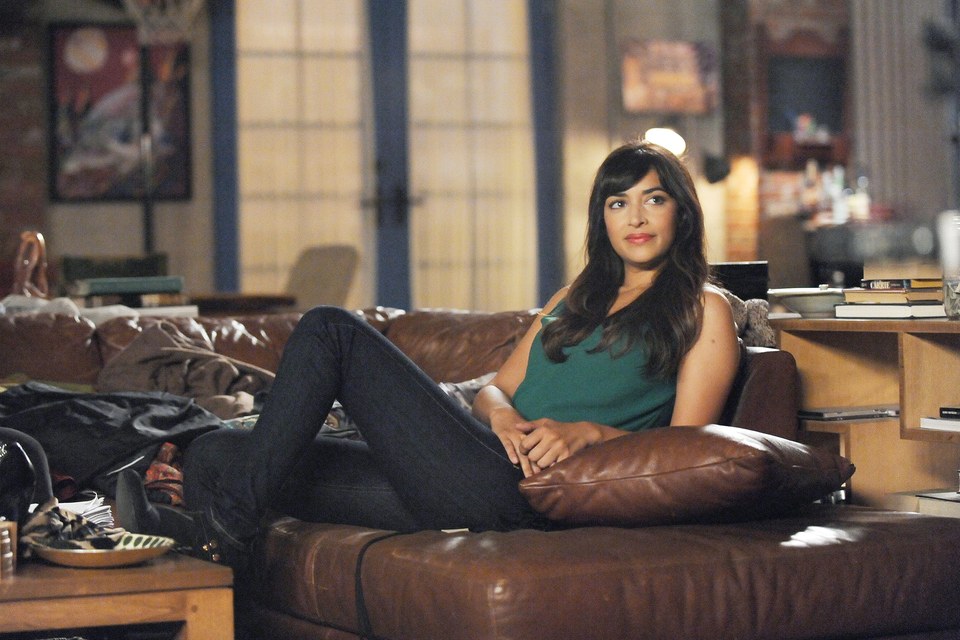
Typically, South Asian-American TV characters tend to be terrorists, funny foreigners, or quirky best friends. But while several South Asian-American actors have been cast to play sidekicks on this year’s crop of pilots—and even more of them are playing doctors, another stereotype—other roles are breaking the mold. Mouzam Makkar is a lead on ABC’s The Fix, a traditional law drama from the mind of Marcia Clark. Sarayu Blue leads an NBC sitcom about a video-game storyboard artist trying to “have it all.” Vinny Chhibber plays a gay teacher in CBS’s Red Line. Kosha Patel was cast as a lead in ABC’s “comedic soap” False Profits, alongside Vanessa Williams, Bellamy Young, and newcomer Kapil Talwalkar.
The crop also includes CBS’s Pandas in New York, the rare domestic comedy about an Indian-American family—yes, they’re all doctors—and ABC’s The Greatest American Hero reboot, which has been rejiggered to feature TV’s first female Indian-American superhero, played by New Girl’s Hannah Simone.
Not all of these programs will make it to air—but The Greatest American Hero seems like a safe bet for a fall pickup. “Hannah was one of the most sought-after actresses this year. She had multiple offers on the table,” says Claudia Lyon, V.P. of talent and casting at ABC Studios, in a phone interview from Los Angeles. “The broadcast networks need to appeal to broad audiences. So when you cast Hannah Simone, that’s like a game changer.”
An in-demand South Asian-American actress, doing a network TV show created by and produced by South Asian-Americans? We’ve come a long way from the 80s and 90s, when the most prominent Indian face on TV was Apu from The Simpsons—a two-dimensional character comedian Hari Kondabolu has memorably described as “a white guy doing an impression of a white guy making fun of my father.” And while shows created by white people often still lean on stereotypes when they feature brown characters—arranged marriage comes up frequently—brown creators have been leading the charge for something different.
Lyon, who describes herself as “half Indian, half Hispanic,” traces this tectonic shift to The Office’s Mindy Kaling-written “Diwali” episode, which aired in 2006. Kaling cast her own parents in the half hour, which centered on a ceremony that most Indian Hindus would recognize: a puja celebrating the festival of lights. It was broad enough not to alienate non-Indian audiences, while still incorporating details that would feel viscerally familiar to anyone who shares Kaling’s background—the sumptuous clothing, the food setup, the Bollywood soundtrack mixed with Beyoncé.
Broti Gupta, a comedian and writer for Netflix’s Friends from College, also cites Kaling as an inspiration—particularly for the way her character on The Office, airheaded Kelly Kapoor, subverted expectations audiences may have had for an Indian-American woman.
“When she’s asked to explain what Diwali is about, she’s like, ‘I don’t know; I don’t care,’” says Gupta. “There’s something so honest about [that] . . . you ask me what the history of Diwali is, I will Google it on my phone.”
Kaling pulled off the same thing on her next show, The Mindy Project, which launched on Fox in 2012 and aired its final episode on Hulu last November. “It wasn’t about going and telling an Indian story,” says Lyon. “It wasn’t ‘My parents won’t let me do this or that,’ or ‘I’m really shy or socially awkward.’” Aziz Ansari followed a similar trajectory, first playing attention-seeking Tom Haverford on Parks and Recreation—a character whose background partially mirrored Ansari’s own—then creating and starring in the more ambitious Netflix series Master of None, which premiered in 2015.
It can feel like the surge in South Asian representation on TV happened suddenly—“but it’s definitely been a process in the time that I’ve been working in television,” Lyon says. For example: ABC has been tracking former Daily Show correspondent Aasif Mandvi “for years,” but it wasn’t until he auditioned for cop drama The Mission that the network felt they’d found the right role for him.
That series engaged in color-blind casting, which matches actors with roles without considering their ethnicities. But other ABC pilots took a more deliberate approach: the role that Patel plays in False Profits, for example, was specifically written for a South Asian woman. They found Patel through the diversity-focused ABC talent showcase, which counts Lupita Nyong’o among its alumni. The program is designed to pay dividends for the network: “You might not cast someone you I.D. this year, but it’s the long game,” Lyon explains. “[So] when a show like The Greatest American Hero gets picked up, we have people.”
Gupta also sees the shift in casting as the result of South Asian-American creators finding more platforms for their work online, on TV, and in film—as Kumail Nanjiani did with his Oscar-nominated comedy The Big Sick. “Online, there are just so many ways for people to create their own space to tell stories that we haven’t seen otherwise,” she says. Gupta herself found representation after writing humor columns for The New Yorker’s Shouts & Murmurs section.
Those who have been keeping an eye on the state of South Asian-American representation in TV know that these actors have become increasingly visible in recent years. But this pilot season could be something of a watershed. And perhaps next year, there’ll be a new story to tell: one about South Asian-American actors, writers, and producers entering an arena in which their presence is the norm, not the exception. And with that will come new levels of representation—not one narrative told over and over again, but a breadth of increasingly specific stories. “It won’t be: ‘this is the Indian-American experience,’” says Gupta. “We’re going to see regional differences; we’re going to see very specific identities that we, as a community, understand—but that the global platform has never seen.”